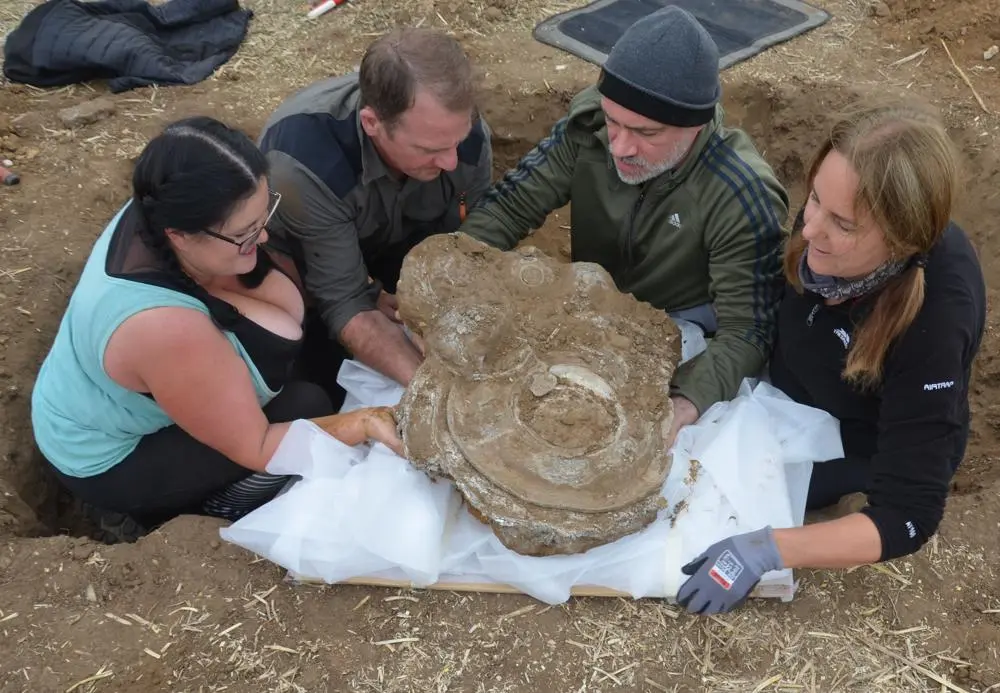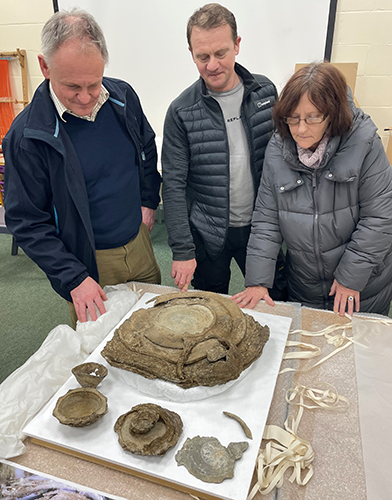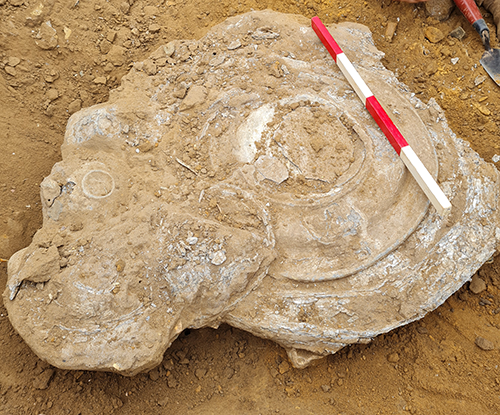In a thrilling archaeological discovery, an exceptional array of late Roman pewter plates, platters, bowls, and a cup has been uncovered in Euston, Suffolk, UK. This extraordinary find, which dates back around 2,000 years, illuminates the rich heritage of the area and offers insight into the lives of its ancient residents. The collection is currently exhibited at the West Stow Anglo-Saxon Village and Museum, located near Bury St Edmunds, where it will be open for public viewing until January 2024.
Discovery of the Hoard

The collection was discovered in the fall of 2022 by local metal detector enthusiast Martin White during an East of England Rally, a coordinated detecting event. White, who has been involved in metal detecting for nearly ten years, described this find as his most significant achievement to date. “It was incredibly thrilling! We promptly consulted with the Archaeological Service to ensure the items could be retrieved and documented without sustaining any damage. Being part of the whole journey—from discovery to excavation and then seeing the items on display—was a true honor,” White recounted.
Archaeological Significance
The artifacts were found meticulously arranged in a pit, indicating they may have been placed together for safekeeping or as an offering. This remarkable preservation offers critical insights into the customs and daily life during the late Roman period. Councillor Melanie Vigo di Gallidoro, Suffolk County Council’s Deputy Cabinet Member for Protected Landscapes and Archaeology, emphasized the importance of this find: “It’s astonishing to consider that this delicate hoard has endured for thousands of years, and Martin’s discovery enriches Suffolk’s narrative.”

Expert Analysis
Faye Minter, Suffolk County Council’s Archaeological Archives and Projects Manager, provided additional context regarding the find: “This is a significant discovery. The larger plates and platters were likely used for communal food service, while the octagonal bowls may carry Christian significance. Similar hoards have been discovered across southern Britain, including in the nearby large Roman settlements at Icklingham and Hockwold.”

Public Exhibition
The hoard has been generously donated to the West Stow Anglo-Saxon Village and Museum, where it is now prominently featured. Councillor Ian Shipp, Cabinet Member for Leisure and Culture at West Suffolk Council, which oversees the museum, expressed his excitement: “We are extremely grateful for this generous donation to West Stow Anglo-Saxon Village and Museum and are thrilled to showcase it for our local community. It weaves a new thread into the narrative of our area’s history during the later Roman period—just prior to the establishment of the settlement at West Stow.”

Conclusion
The unearthing of this 2,000-year-old Roman hoard in Suffolk stands as a testament to the region’s rich historical fabric. As these ancient artifacts are displayed, they forge a tangible link to the past, enabling visitors to delve into and appreciate the legacy of Roman Britain. This remarkable discovery not only deepens our understanding of history but also underscores the ongoing significance of archaeological research and preservation.

